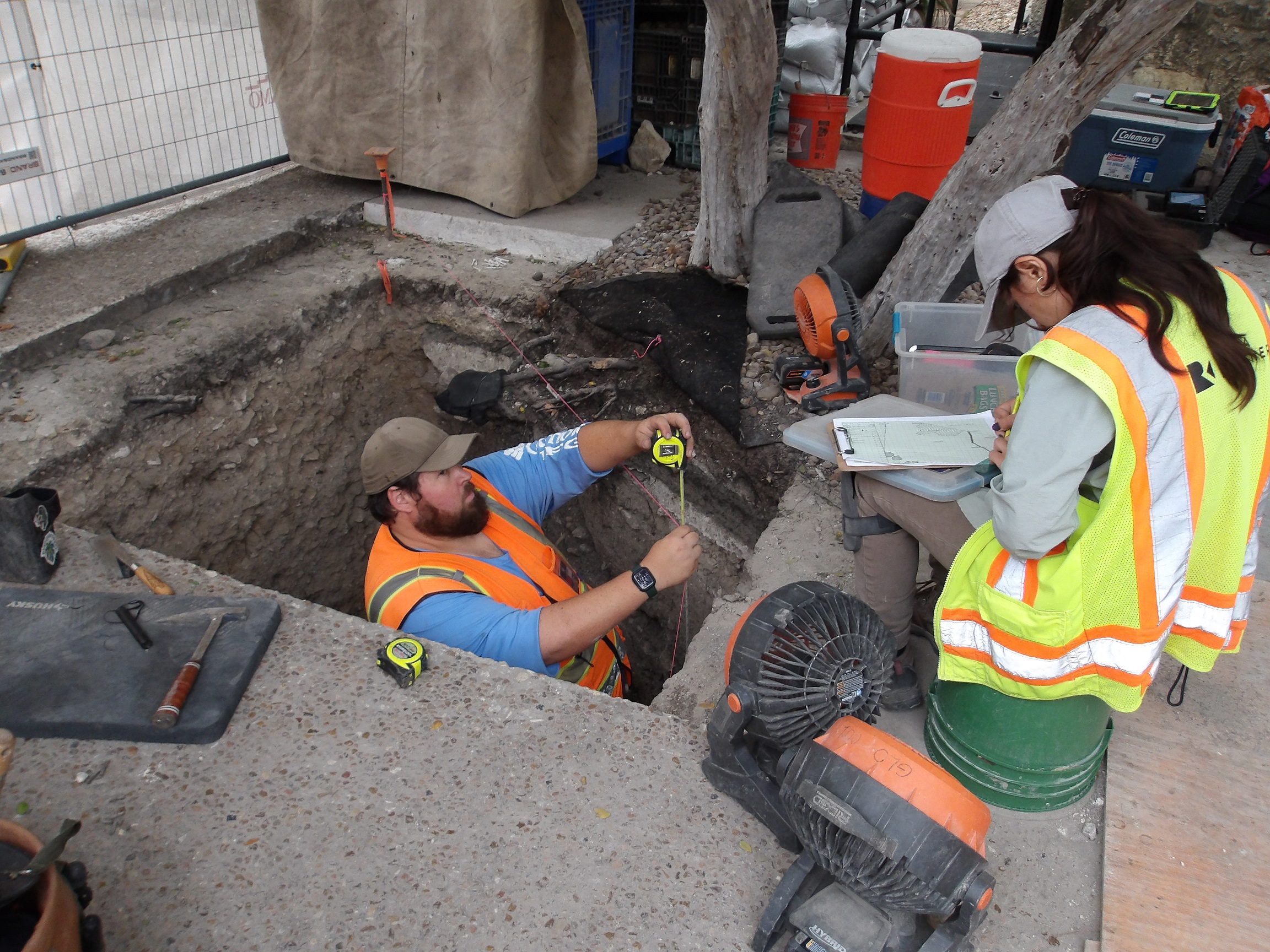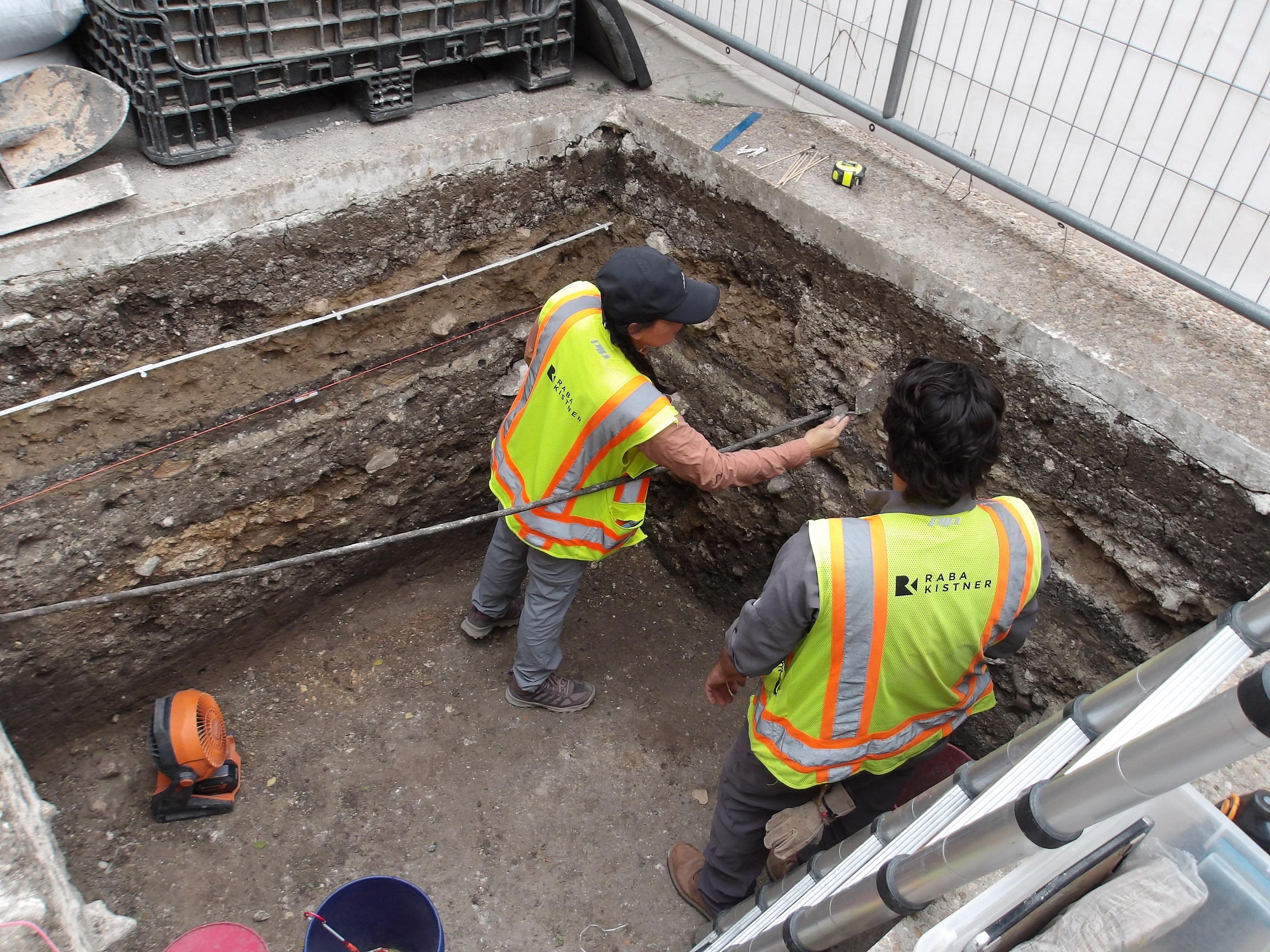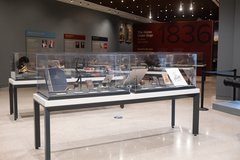Investigations continued for the Church Preservation Project. Archaeologists continued to work in EUs 4 and 5, located between the Church exit and gift shop entrance. Both units have completed excavation and are now in the process of soil profiling and end of unit documentation.
In EU4, archaeologists excavated to approximately 150 cm below surface. The upper levels of EU4 consisted of modern disturbance, including construction fill, large roots, and an abandoned irrigation line. The lower levels have been mostly intact due to the absence of modern disturbance and presence of diagnostic ceramic sherds. Diagnostic artifacts include several Valero Red Painted sherds, Galera, an olive glass bottle neck/finish, and a partial gun flint. Now that excavation has been completed, archaeologists will soil profile two of the unit walls and execute final unit documentation.






